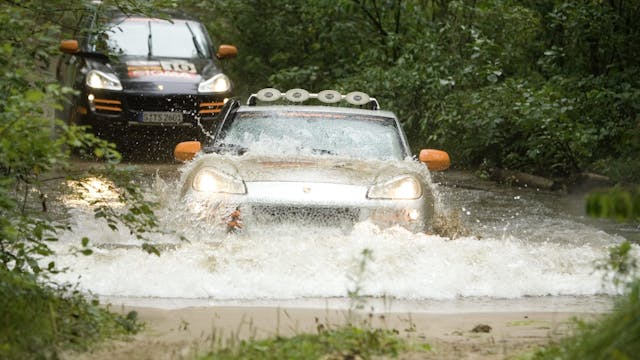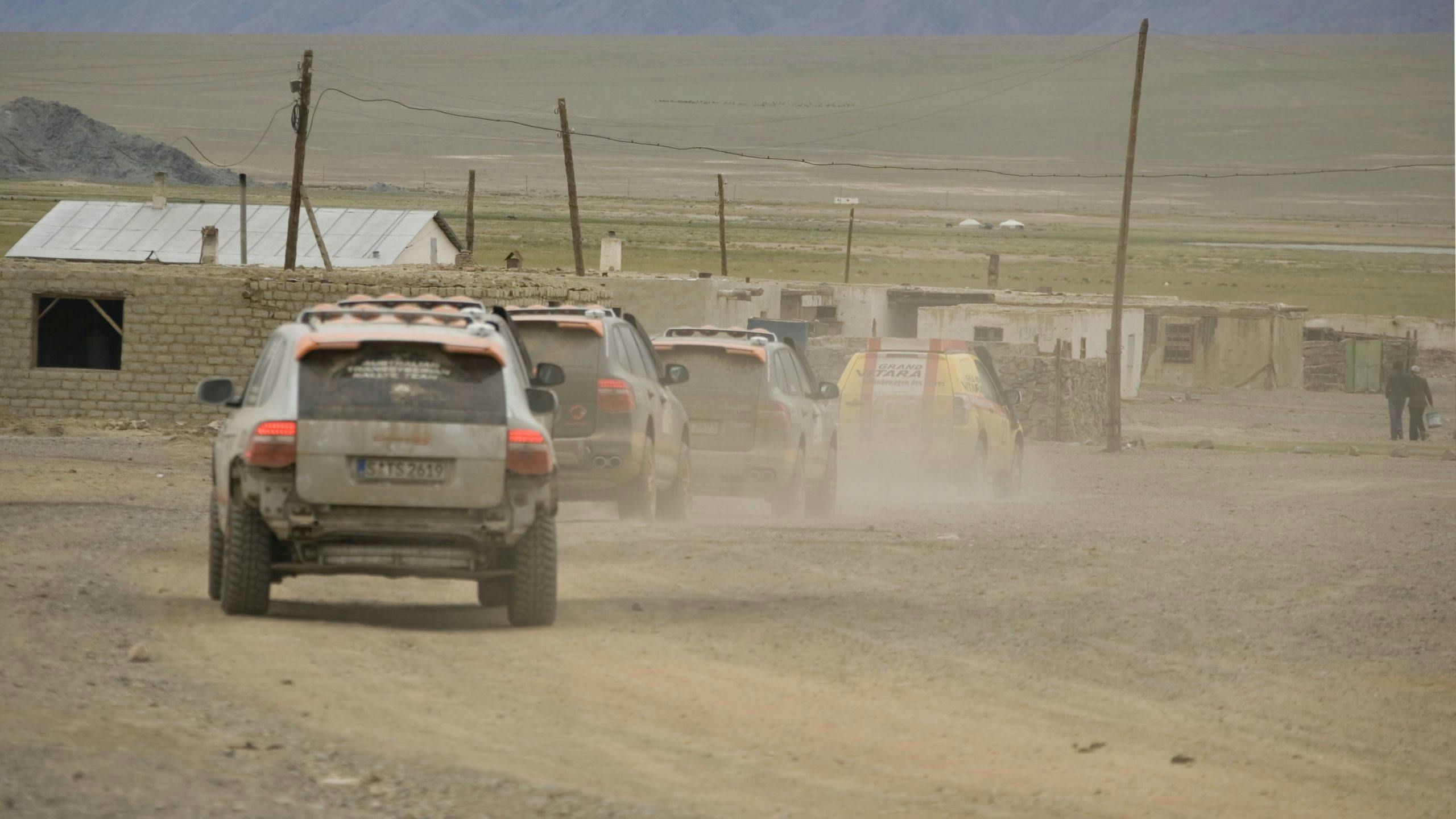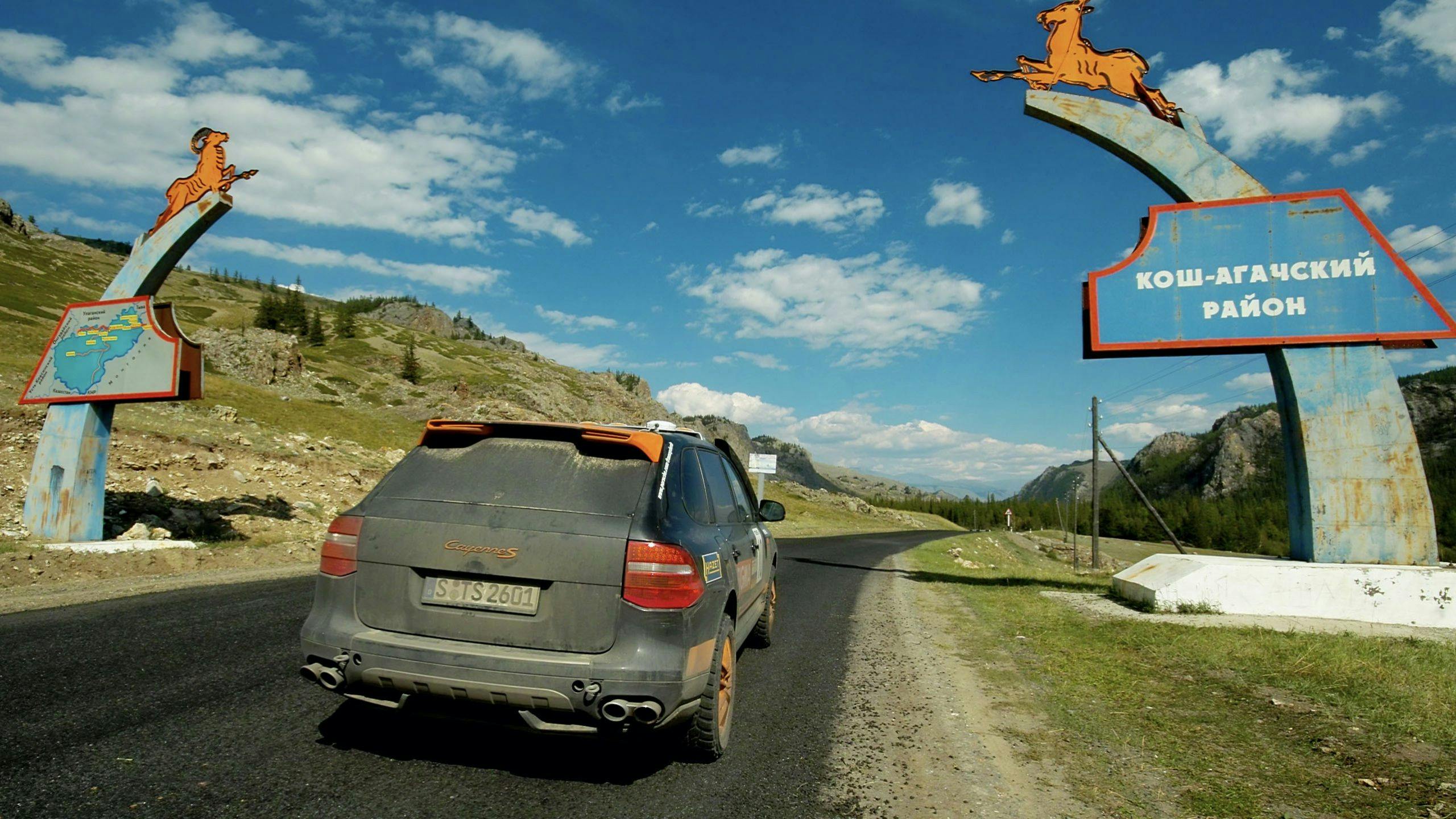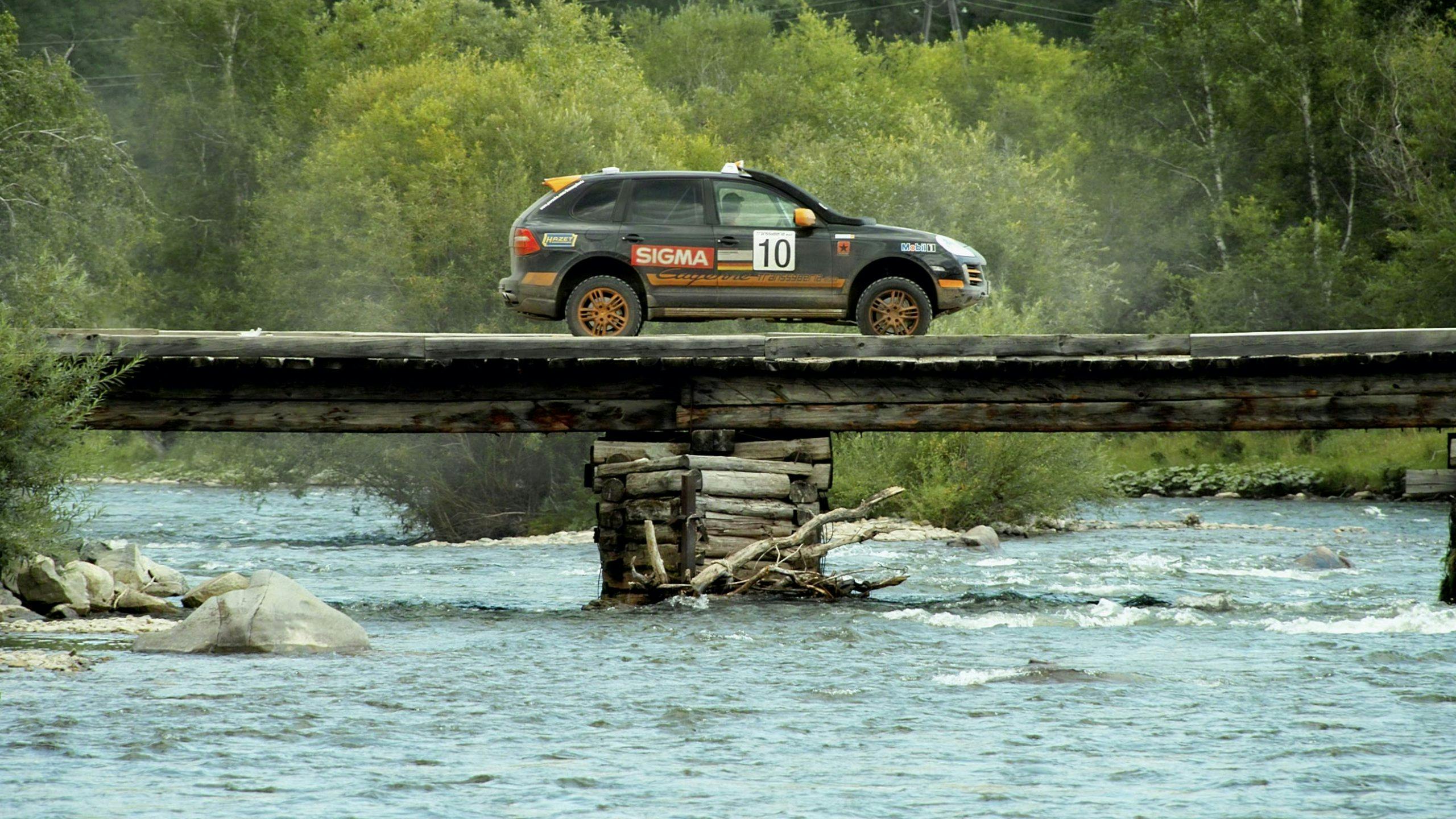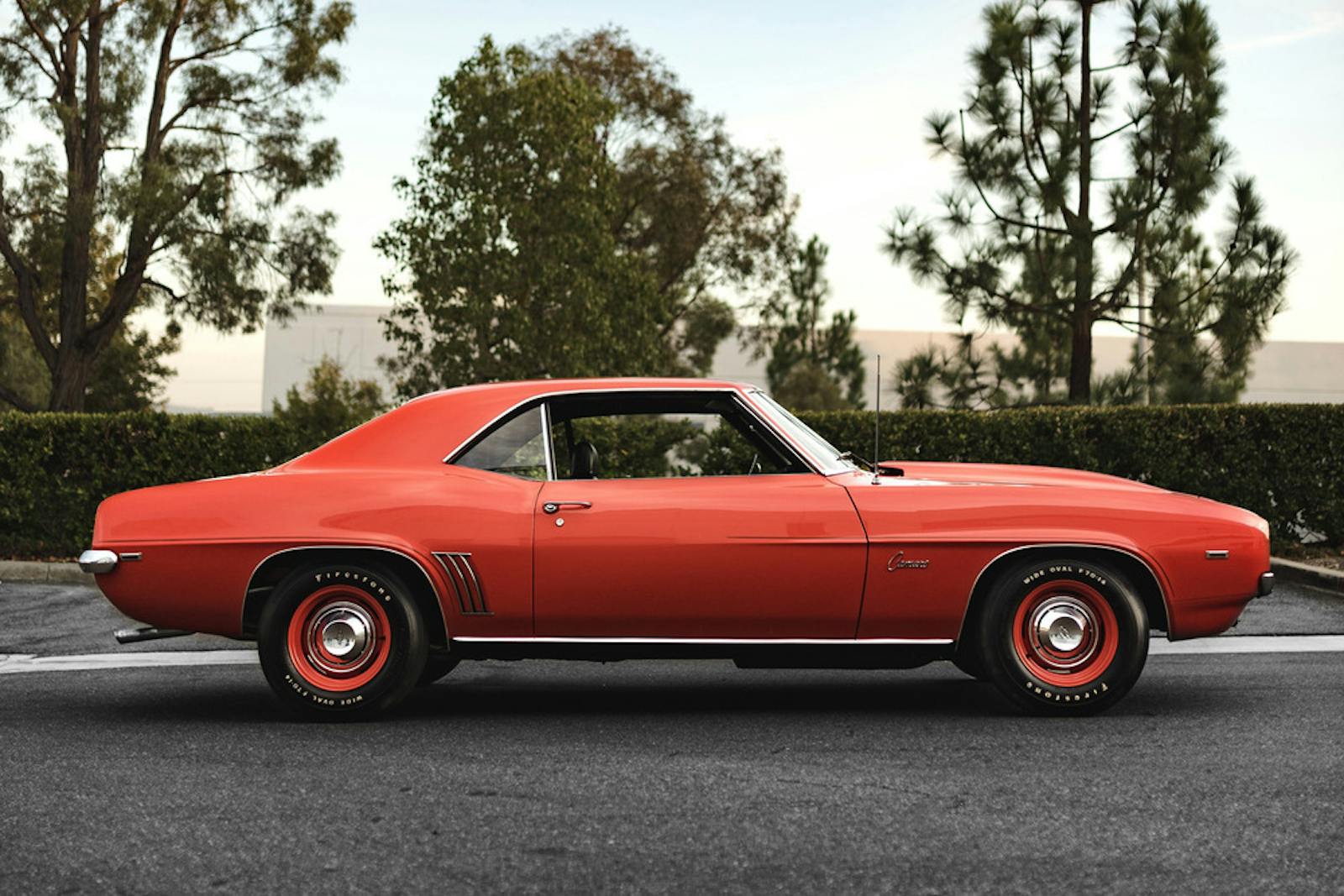How the Porsche Cayenne conquered Siberia
Yesterday, we wrote about the polarizing Porsche Cayenne perhaps finally earning enthusiast respect. Maybe even as a collectible, one day. Over-engineered from the outset, the Cayenne was known inside the company as Project Colorado, but the toughest test in its history was actually a wild ride across the Siberian wastes.
Now celebrating its 20th anniversary, the Cayenne is in its third generation. To date, over a million examples have been sold around the world. By contrast, it took the Porsche 911 fifty-five years and eight generations to reach the same milestone and, together with the smaller Macan, SUVs now make up more than half of the brand’s sales. It’s no exaggeration to say that the Cayenne completely turned around Porsche’s fortunes.
When the car launched in 2002, it may have had its doubters among the media and the marque’s massed ranks of fans. Porsche was nevertheless convinced that the high-riding Cayenne was a recipe for success. In fact, almost a decade before work had even begun on the project, Ferry Porsche claimed, “If we build an off-road model according to our standards of quality, and it has a Porsche crest on the front, people will buy it.”
Project Colorado was a joint venture with Volkswagen, and, although many assume that the final Cayenne was a rebadged VW Touareg, the reverse is true. Porsche developed the platform and then each car maker specified its own powertrain and chassis setup. To meet Ferry Porsche’s expectations, the Cayenne needed to possess the speed and handling of a sports car on the asphalt, but also the off-road ability of a proper 4×4.
The all-important power came from a new 4.5-liter V-8 engine, offered in normally-aspirated and turbocharged guise and with 340 or 450 horsepower. Drive went to all four wheels, of course, with a standard split of 62:38 in favor of the rear wheels, but thanks to a new Porsche Traction Management system either axle could get all the grunt if required. A fully-locking center differential maximized traction in tricky conditions and air suspension with Porsche Active Suspension Management could raise the ride height to almost 11 inches.
All this and more was put to the test over three consecutive entries in the grueling TransSyberia Rally. In 2006 Porsche entered two Cayennes, driven by German, Spanish and Russian competitors. Spearhead by engineer Jürgen Kern who helped develop the car, the Porsches finished first and second on this 6000-mile adventure from Berlin to Lake Baikal in Siberia. Only minimal modifications, such as a snorkel, extra underbody protection, off-road tires, and a winch were made, and the Cayenne’s capability was cemented.
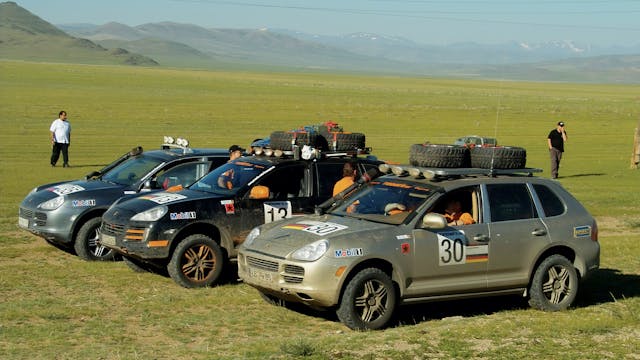
Spurred on by this success, Porsche produced 26 Cayenne S TranSyberia models, and teams from across the world took part in the following year’s event—a 4000 mile run from Moscow to Ulaanbaatar in Mongolia.
Among the drivers was British journalist and racer Dickie Meaden who recalls, “The scale of it was huge. It was quite overwhelming. In Mongolia there’s only gravel roads, and they just stretch off as far as you can see. There’s no signposts—really nothing. Nothing at all. And we were steaming through in a factory-prepared rally raid car.
“I think the first stage was 400 miles. And it was up to you how you get to the checkpoint. So you see this big mountain and you think, ‘Well, it looks like we could drive up that so why don’t we?’”
Porsches took seven of the top ten places, although Meaden was not among them. “We were literally in sight of the finish of one stage and then we just smacked this rock and punched a hole in the sump guard and cracked the sump,” Meaden told detour-roadtrips.com. “It was absolute carnage on that stage and six or seven cars hit the same rock. We limped to the end of the stage and realized it was another 300 miles to the overnight halt. Luckily the Canadian car driven by Kees Nierop stopped to help. Kees was a Porsche factory driver who drove the 961 at Le Mans and it transpired his family business was a proper Ice Road Truckers kind of haulage company. When he wasn’t a race driver he’d drive these massively long distances in big rig trucks, so he said, ‘Well, I’ll give you a tow.’
“So we hooked up our car on a very short rope. I manfully volunteered to sit in the tow car and my co-driver Neil Hopkinson was in our car, steering it. Kees proceeded to tow at about 70 mph for hours and hours on end on these really dusty dirt roads. When we got to camp Neil was caked in dust because he’d had his head out of the window as he couldn’t see through the windscreen. His eyes look like he’d popped them out and rolled them in a load of sand and then popped them back in again.”
In 2008, nineteen of the surviving cars entered once more, this time taking nine of the top ten places. “We didn’t build any new cars for this and didn’t even change the chassis,” says Kern.
A year later Porsche capitalized on the Cayenne’s conquest by launching a run of 285 TransSyberia special editions. Powered by the new 405-hp GTS engine, fitted with air suspension and available with a six-speed manual or Tiptronic transmission, the car was offered in a range of two-tone paint schemes to mimic the competition cars. You could even opt for a set of roof lights to complete the rally look, for the coolest Cayenne at the country club. These days, it could even be considered collectible. One such car just sold on Collecting Cars for $25,000—rather more than the roughly $9000 you’d expect to pay for a standard model of the same era.
Porsche has since taken the Cayenne in a different direction, honing its on-road ability and turning it into a Nürburgring record-setting machine in the process. Seven minutes and 38.925 seconds around the Nordschleife is certainly impressive … but wouldn’t you rather see another off-road marathon instead?
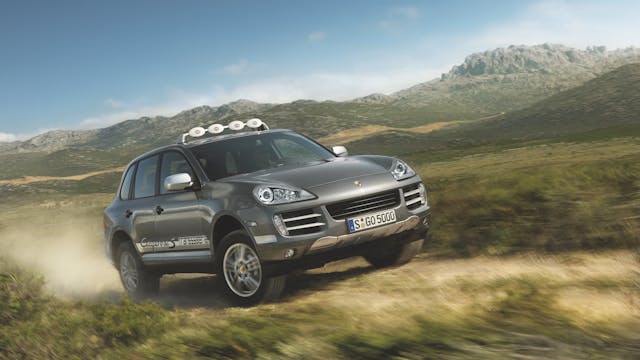
Check out the Hagerty Media homepage so you don’t miss a single story, or better yet, bookmark us.
